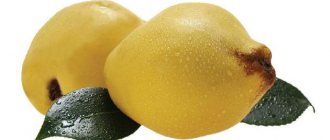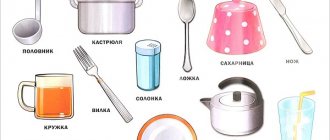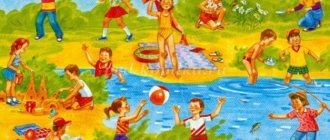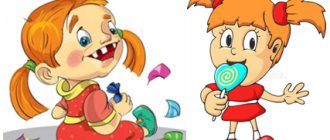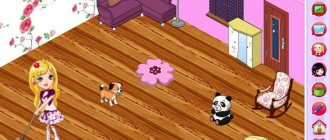Didactic games on the topic “Dishes”
Didactic games on the topic: TABLEWARE
Goals:
- Development of visual attention, ability to correlate colors.
- Activation of a dictionary on a topic.
- Development of fine motor skills of the fingers.
The teacher invites the children to choose from the dishes placed on the table the one that is necessary for drinking tea. The children’s task is to set the table for tea with a blue napkin (blue plates are chosen), and work with other colors is also done.
Goals:
- Development of auditory attention.
- Formation of logical thinking and phrasal speech.
The teacher says that mom is very tired, invites the children to help her wash and dry the dishes, and clarifies which dishes are washed (dirty) and which are dry (wet). Then the teacher calls: WET PLATE, the children answer: WE CLEAN UP; teacher - DIRTY POTTY, children - WE WASH, etc.
Goals:
- Development of visual attention and memory.
- Activation of a dictionary on a topic.
Practical use of a simple sentence.
On the table in front of the children there are cards with images of plates or plates for dolls (up to 5 pieces). The teacher reviews it and assigns it together with the children. Then invite the children to close their eyes - “rest” removes the object. When children open their eyes, they call the dishes “broken.” You can remove unbreakable utensils by emphasizing to children that they cannot be broken.
Goals:
- Activation of a dictionary on a topic.
- Formation of a diminutive noun in the singular
Game "Three Bears": Three bears came to the kitchenware store. Children are sellers. They offer the bears dishes according to size, explain why a bear needs a plate, and a big bear needs a plate.
Game situation “What’s in the bag?”
- Guys, today there is something interesting for you in the wonderful bag. Lower the handle and pull it out. Pot, kettle, frying pan, plate, spoon, cup, knife. All these elements can be called in one word - dishes.
Didactic exercise “What is this?”
This is a saucepan. You can cook soup in it. This dish. You can put some food in it. This is a spoon. You can scoop food with a spoon and put it in your mouth. This is a cup. You can pour the tea and drink it. This is a knife. They can cut bread. This is a frying pan. You can fry cutlets on it.
Didactic game “Put the food on plates”
- Look at the products we have: green cucumbers, red apples, yellow pears, blue plums. These products must be placed on plates of the same color.
Applique and modeling “Tea set”
– There is a table in front of you (photo).
– Show me where the plate is, there is a large napkin on the table, small napkins. How many large napkins? The napkin is large. How many small napkins? Two small napkins. Take the boxes and see what's inside. Teapot and cups.
- How many cups? Two cups. How many teapots? Kettle. Place napkins and cups in the kettle. There is only one kettle, and it is large, so it can be placed on a large napkin. And there are two cups and they are small, so you put them on two small napkins. Now we glue the teapot and cups.
- Now it would be nice to make bagels for tea. Take plasticine and roll out a thin sausage. Take the ends with both hands and wrap it into a ring. Connect the ends. It turned out to be a donut. Place it on a plate and press down with your palm. Sprinkle poppy seeds on top and press with your finger. Prepare another bagel in the same way.
What else to read: Entertainment “The Adventure of Kolobok” for children of the first junior group
Didactic game “What’s missing?”
– There are dishes in front of you: a saucepan, a cup, a spoon, a plate. Remember them. Now I’m going to cover the plates with a handkerchief, but when I open it, there’s something missing. What is missing?
Breathing exercise “Shoo, fly, fly away”
(Right to the song of the same name).
- A fly flew in and sat on the plates. - Shu, fly, fly! You have no business on our plates. Blow on the fly to make it fly away. (Children are given cut out drawings of flies. The exercise is repeated several times).
Finger gymnastics “Helper”
Our Antoshka washes the dishes. (Rub your palms together)
Wash your fork, cup, spoon. (Extend your fingers from your fist, starting with your little finger)
I washed the saucer and glass. And he closed the tap well. (Simulation of hand movement)
Game with clothespins “Fork”
- Here is a toothless fork. Use clothespins to make the tines of the fork.
Didactic game “Setting the table”
– In front of you in the photo there are dark spots – shadows. On each shadow you need to place a suitable plate in the form: plate, fork, knife, spoon.
Didactic game “Sorting dishes by size”
They washed the dishes cleanly. They didn’t forget to dry them: Cups and saucers stand in a row And glow in the sun.
– Make a pyramid of cups. Then stack the cups on top of each other.
Musical and rhythmic exercise “We are clinking dishes”
Children make sounds using various utensils to the song “We play on the cymbals.”
Finger painting "Pan"
– Color the vase: place your fingerprint in the empty circles and fill in the stripes.
Reading the poem "Dishes"
Girl Irinka put things in order. Girl Irinka said to the doll: “The napkins should be in the napkin holder. The oil should be in a can. The bread should be in the bread basket. What about salt? Well, of course, into the salt shaker!”
Bas-relief modeling “Decorate the cups”
The cups are new for Mitya. So he could drink tea, milk and lemonade. We need to decorate the cups.
Tear off pieces of plasticine and roll into balls. Apply to the cup and press down.
Musical and rhythmic exercise “The bear clinks with a spoon”
(Right to the song of the same name).
Construction “We are waiting for guests”
- The nesting dolls will come to us. The nesting dolls are small and you can’t seat them at our large table, so we need to make tables and chairs for the nesting dolls. Take a cube, place it in front of you and place a brick on top of the cube. Like. It turned out to be a table. Now let's make a chair. Place it near the table and place a brick at the back. Like. (Vertical). The result is a chair with a backrest. And here are the nesting dolls! Place them on small chairs. We put the dishes on the table.
Examining plates made from various materials
- Here are the dishes. Let's count them. One two three four. How many dishes are there? Four plates. All dishes are different. Here is the famous ceramic plate. Touch it with a spoon and listen to the resulting sound. Here is a metal plate. Also touch with a spoon. Here's a plastic plate. Touch it. But the plate is wooden. Knock on this plate too.
Didactic exercise “Tricky spoon”
- Let's play with a spoon and name the dishes.
Close your eyes and guess which plate the spoon is knocking on.
Didactic game “Cut into two halves”
Children cut vegetables in half with plastic knives (fastened with Velcro).
– How many pieces did you cut your product into? We count: one, two. You cut into two halves.
Modeling salt dough “Pancakes in a frying pan”
– Roll out the dough, rolling it straight into a thick sausage. Cut the sausage into pieces with a knife. Squeeze each piece between your index finger and thumb, place it on the pan and press down.
Exercise “Cooking lunch”
– Before dishes: pot and frying pan. Take your food, place it in a pot or pan, and place it on the stove.
Didactic exercise “Folding napkins”
– Place the napkins well in a glass.
Technological map for speech development on the topic of dishes
Routing
Topic: "Dishes"
Age group: middle
Goal: To familiarize children with the general concept of “dishes”
Tasks:
educational:
develop the ability to distinguish and name dishes; improve the ability to find similarities and differences between objects. Differentiate dishes by type (kitchen, tea, dining).
developing:
develop the ability to compose a descriptive story based on an object picture; exercise children in word formation
educational:
cultivate a friendly attitude towards peers, a desire to work in pairs, and the ability to listen to each other.
Preliminary work: Reading K. Chukovsky’s work “Fedorino’s Mountain.” Guessing riddles on the topic of dishes. Looking at images of utensils for various purposes; inclusion of earthenware, metal, and porcelain dishes into the group.
Vocabulary work: Dishes, saucepan, kettle, plate, frying pan, cup, salad bowl, sugar bowl, butter dish, milk jug.
Enrichment of vocabulary: porcelain, clay, metal.
Activation of vocabulary: kitchen utensils, tableware, tea utensils.
Methods: reading a work, conversation, retelling, looking at pictures and slides, questions, a physical education moment, positive assessment, content analysis.
Materials and equipment:
Circles of different colors (2 yellow, 2 red, 2 blue); colored envelopes in three colors. D\i “Find a pair” (dishes: saucepan, kettle, cup, plate, frying pan, sugar bowl, butter dish, coffee pot). Encouragement prizes - “enchanted leaves”.
Planned result: persistent cognitive interest in K. Chukovsky’s story “Fedorino’s Mountain”, familiarity with the general concept of “Dishes”.
| № | Stages, Continue activity | Stage tasks | Activities of a teacher | Alleged children's activities | Expected Result |
| 1 | Organizational but – motivational stage (introductory part) | Get children interested in upcoming activities | Guys, a lot of guests came to our lesson today, let's Let's say hello. Are you interested in what we'll be doing today? Listen riddle. It comes in different types: glass, wood, metal, ceramic. Flower, polka dot, leaf. But everyone needs one. It's delicious to eat from it. | Children say hello Children's answers | |
| 2 | Main stage | ||||
| 2.1 | Problem formulation stage | Creating a problem situation, its formulation in a form accessible to children | Guys come to us the group received letters . But in order to open these letters we need to complete the task “Find a Pair” . - Each of you has circles of different colors on your chest, I’ll close my eyes, and you You will quickly find your match. (Children in pairs are divided into three teams yellow, red, blue.) The yellow team receives a yellow envelope, the red team receives a red envelope, the blue team receives a blue envelope.) Didactic game “Collect a picture” happened? 1. Guys, what is this? (Shows a saucepan.) What kind of pan is it, what can you say about it? 2. What is this? (Cup.) What cup? What is he like? Thus, the teacher examines all the objects (frying pan) . - Guys, it seems to me that we have been sitting too long, let's take a rest. Fizminutka | Children are divided into three teams in pairs yellow, red, blue Children use parts to assemble an image of a pot, kettle, frying pan, cup Children's answers |
“Choose dishes for the doll” - children's educational game
In this game, a child from 3 to 4 years old develops skills in using utensils and consolidates knowledge about their various types and types. Attention and speech develop - which is especially important in preschool age.
Type: Games with objects
Didactic task: consolidate children’s knowledge about different types of dishes; develop the ability to use utensils for their intended purpose; reveal resourcefulness, attention, speech.
Rule of the game: at the teacher’s signal, quickly select the necessary dishes (tea, lunch, cooking).
Gameplay: Look for the necessary utensils for the work of a nanny and cook.
Progress of the game: The game is played after the children become familiar with the work of the nanny, the cook and find out what dishes are used in their work.
What else to read: Didactic game “Who can name the most actions?”
The teacher prepares three dolls for the game: one in a chef’s jacket (cook), another in a robe (nanny), and the third doll is just a girl. The cook is at the stove (toy), the nanny is preparing dishes for dinner, the doll is sitting at the table (made of toy furniture). The teacher examines the dolls together with the children, talks about who they are, what they do, what utensils they need; asks you to remember what you saw while going to the kitchen. There are different dishes on the table next to the teacher.
Showing an object, the teacher tells what this object (pot) is called, who needs it (cook). Then, turning to the child, he says:
- Kolya, take the frying pan to the cook and put it on the fire. (The child completes the task.) Then the teacher shows the bread bin; – What is the name of this object and who needs it? - This is a bread box. He must be taken to the nanny. - What it is? - says the teacher, showing a spoon. – This is a teaspoon, it is needed for eating compote and drinking tea.
Thus, one after another, children practice choosing dishes, correlating this with the profession of people they know. To ensure that children remain interested in the game throughout their journey, the teacher shows objects and talks about them in such a way as to evoke an active reaction in children:
– And probably no one needs this dish? (Shows a ladle, a colander, a kettle.) - Necessary! Necessary! – the children answer in unison. -Who needs a ladle? - Cook. – Does the nanny need it too? - It is necessary, it is necessary! - So how many buckets do you need? - Two. - Let's find another ladle.
Among the remaining dishes, the children look for a ladle, find it and bring it to both the cook and the nanny.
The game “Assemble the dishes” not only helps to acquire knowledge about household items and their purpose, but also arouses interest in playing with dishes in children 3-4 years old: children play the role of a nanny, a cook. They have a desire to give the doll tea, etc.
Thematic lesson on speech development “Dishes”
A lesson based on the study of a specific lexical topic is beneficial material for the versatile development of a preschooler. The combination of various types of activities allows you to effectively solve several problems at once:
- systematize the child’s ideas about the world around him;
- form the lexical and grammatical structure of speech;
- replenish thematic vocabulary;
- develop logical thinking and creative imagination;
- strengthen fine and gross motor skills;
- stimulate the cognitive activity of a preschooler.
How are these problems solved using the example of the lexical topic “Dishes”? Let's find out together!
Kitchen conversations
Sometimes parents complain that housework takes up so much time that there is practically no time left for developing activities with the child. We believe, we know, we understand! However, we are confident that if desired, it is possible to successfully combine the tasks and development of a preschooler. For example, in the process of preparing dinner, washing dishes and cleaning the kitchen, you can expand and strengthen your child's knowledge on the topic "Utensils."
- Let's look at a variety of dishes. Let the baby play with plates, cups, spoons. If you are concerned about the safety of "didactic materials", use plastic plates or a set of children's toys.
- Give the names of all the elements. You can organize this in a playful way: name the word, child. The only condition for this sequence is that all words must indicate dishes. If a child makes a mistake and calls, for example, a refrigerator, explain to him why he is wrong, what a “refrigerator” is and what group of objects it can be classified into.
- Explain that there are cooking utensils. Name with your child what belongs to this group. And then name the dishes they eat.
- Ask your child to answer the questions:
- What dishes can you eat?
- What foods can you drink from?
- What utensils will we need to prepare dinner?
- What do we call cutlery?
- What items are teaware?
- If you use a pull tab or cutlery tray to store cutlery, have your child help you organize spoons and forks into the compartments. Show that there are small spoons. Tell us what they are for. Explain that spoons need to be stacked separately from spoons. Of course, pay attention to the safety of the child and put the knives aside in advance. Even in older preschool age, a child can only use this item under the watchful supervision of an adult, and at 4-5 years old it is still too early to take it.
What else to read: Master class “Circles of Lull” methodological development on the topic
By using “cook time” in this way, you will achieve several goals at once:
- conduct a development lesson within a given topic;
- strengthen trusting relationships and increase parental authority;
- involve the child in housework, fostering responsibility and hard work.
Agree, a great solution for busy parents!
Children's creativity
Crafts develop fine motor skills in preschoolers and stimulate the imagination. The abundance of techniques allows you to choose a creative activity to suit every taste!
Application “Elegant teapot”
Prepare an empty teapot from plain cardboard (print the image and cut out along the outline).
The child’s task is to decorate the teapot with applique.
This can be done in several ways. For example:
- mosaic application;
- napkin applique;
- quilling -
choose the one you like best and get creative!
"Plasticine tea party"
Invite dolls and stuffed animals for tea. Place them around the table. Have your little hospice place a toy plate in front of each one.
- That you need to drink tea, well, remember, honey!
Place the cup and saucer.
- Don't forget the teaspoons. Let's pour tea from the kettle.
Everything is fine! But just what to treat your dear guests?
- Now let's prepare the sweets.
From colored plasticine you can “bake” pretzels and flatbreads, loaves and buns, you can make bagels and sweets. Good! What do we need.
Games on the theme "Dishes"
"Find the odd one out"
To develop visual attention, offer your child a picture of dishes. Each line has one more element. Find it!
With children of older preschool age, you can perform exercises to train auditory attention. Let the child hear the names of the objects, determine which one is the odd one out, and explain his choice.
- Kettle, frying pan, plate, saucepan.
- Glass, saucer, cup, mug.
- Fork, knife, sugar bowl, spoon.
- Teapot, sugar bowl, cup, frying pan.
- Kettle, cup, frying pan, scoop.
"Where is it stored"
In this play activity for children aged 4 to 6 years, your little one will be able to expand their vocabulary with new concepts and at the same time practice forming names by adding suffixes to roots.
His task is to answer where the products are stored
- bread in the breadbox;
- soup -... (in a tureen);
- salad -... (in a salad bowl);
- sugar -... (in a sugar bowl);
- salt -... (in a salt shaker);
- oil -... (in a jar of oil).
"Difficult words"
Tell your child how new words are formed. Give an example of a compound word “peeler”, consisting of the words “potato” and “peel”. Explain that this word refers to a potato peeler. Ask your child to explain the meaning of the following words by analogy with the example:
- meat grinder;
- juicer;
- vegetable cutter;
- coffee maker;
- double boiler;
To develop creative thinking, encourage your child to imagine, name and design new kitchen utensils. We will be grateful if you share the results of this creative task with us and our readers in the comments to the article.
“Such different dishes”
The goal of the game is to teach the child to form relative adjectives. Tell your child that dishes are made of different materials: silver, wood, glass... Look at household dishes together and discuss what they are made of. Now ask your child to answer your questions using the following example:
- silver spoon - silver;
- porcelain cup -... (porcelain);
- glass glass -… (glass);
- crystal saucer -… (crystal);
- steel fork -… (steel);
- ladle with clay -... (clay).
"Be careful"
When the child gets tired of doing play exercises, offer him a fun game in the fresh air for attention.
Stand facing each other, and if there are more children involved in the game, the leader can stand in the center, gathering the players around him.
Listen to fun children's tunes that your child can dance to. But while he is dancing, he must listen to you carefully. If you name dishes from which you can drink, the child should clap your hands three times, and if you can eat from something, then jump three times on the spot.
Eureka Tips
- When planning a developmental lesson on the topic “Dishes”, choose several diverse activities that will allow you to effectively redirect your child’s attention, avoiding overwork and loss of interest.
- The younger the child, the more important it is to use visual material: real or toy dishes, mannequins, pictures.
- Don't insist on activities that your child finds objectionable. Do not forget that the child should perceive the activity as a game: fun, exciting, interesting.
May your parents be happy! See you again, friends!
MAGAZINE Preschooler.RF
Permyakova Svetlana Sergeevna Municipal budgetary preschool educational institution "Kindergarten No. 82 of a combined type" Position - teacher-speech therapist Kamensk - Ural Sverdlovsk region Summary of a lesson on speech correction and development in the senior compensatory group for children with speech disorders. Subject. Dishes. Tasks. • 1.Practice in the formation of related words using the suffixes –nits-, -ish-, diminutive suffixes, practice in the formation of relative adjectives. Activate the dictionary on the topic “Dishes”. Learn to classify utensils. Learn to agree nouns and numerals, use nouns in indirect cases. • 2.Develop children's attention, logical thinking, and coherent speech. • 3. To develop children's self-service skills and accuracy when handling utensils. Equipment. Subject pictures: Fedora, cards depicting various numbers of utensils, subject pictures depicting products and the utensils in which they are stored.Progress of the lesson. 1. Organizational moment. -I see. that someone is coming to visit us for class, but I can’t find out who it is? Maybe you can help me? The sieve gallops across the fields, and the trough bounces across the meadows. The broom followed the shovel along the street. Axes, axes, and so they fall from the mountain. Behind them are saucers - Ting-la-la, Ting-la-la, Along the street they rush Ting-la-la, Ting-la-la, They bump into glasses, Tink, And the glasses, Tink, break... And behind them, they jump along the fence grandmother...(Fedora).
2.Message about the topic of the lesson. -Please remind me, what happened at Fedora’s? (The dishes ran away from her.) -Why do you think this happened? (Fedora did not know how to handle the dishes and did not take care of them). -Let's tell Fedora about the dishes today. Maybe then the dishes will return to her. 3. Studying new material. 1) Formation of relative adjectives. -Shall we tell Fedora what the dishes are made of? (Made of metal, glass, plastic, porcelain,...). Game "Form the word." Glass glass - glass, porcelain cup - porcelain, metal pan - metal, cast iron frying pan - cast iron, clay jug - clay, plastic plate - plastic, wooden spoon - wooden. 2) Formation of nouns using the suffix –nits-. -We have special dishes for storing different products. In order to get the name of the cookware, you need to add a particle -nits- to the name of the product. Game “Hitch the trailer” Sugar - sugar bowl, pepper - pepper shaker, herring - herring bowl, bread - bread box, ... But there are names of dishes that are formed with the help of other particles: tea - teapot, butter - butter dish, salt - salt shaker, milk - milk jug, coffee -coffee pot. 3) Activation of the verb dictionary. -Tell Fedora, how should you take care of the dishes? (Wash, clean, rinse,...). 4) -In order for Fedora to use the utensils correctly, we will tell her what they do with what. (Game “Pick up an object.” Formation of nouns in the form of oblique cases.) Cut with what? (With a knife.) What do you pour soup into a plate with? (With a ladle.) What do you eat mashed potatoes with? (With a fork.) What do they drink tea from? (From a cup.) Juice is drunk from what? (From a glass.) What do you eat porridge from? (From a plate.) What is the coffee poured from? (From a coffee pot.) What do you brew tea in? (In a teapot.) Physical exercise. -We've worked hard, it's time to rest. The guests ran to the samovar, together they filled the cups: Delicious tea at the samovar, It contains chamomile infusion. Children stand in a circle, one child is in the middle. They go to the middle of the circle and say hello. They disperse. They walk in a circle, one after another. 5) Classification of utensils. Game "Fourth wheel". -The dishes returned to Fedora, and she is very happy. Fedora began to put it in its place and got something wrong. Let's help Fedora put everything right. -Cup, teapot, saucepan, sugar bowl. (An extra saucepan, since this is a kitchen utensil, and everything else is teaware.) -A saucepan, a teapot, a saucer, a frying pan. -Plate, spoon, fork, coffee pot. 6) -But in Fedora’s house there was more than one spoon and more than one plate. Let's count how many dishes Fedora had. (Correlating nouns and numerals. Work using cards.) 7) -Fedora was so happy about the return of the dishes that she decided to have a party. She invited her friends the gnome Filya and the giant Venya to it. But their dishes should be completely different. Game "Dwarfs and Giants". (Formation of nouns with the help of diminutive suffixes and the suffix -ish-.) Spoon - spoon - spoon. Mug - mug - circles. ... 4. Summary of the lesson. -I liked how well you did today. And Fedora really enjoyed staying with such smart guys. She learned a lot of new things. What new did you learn? What did you like? What task was difficult to complete?
| Next > |
